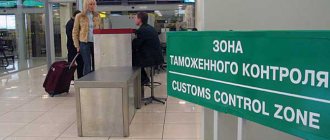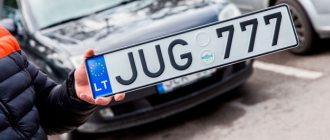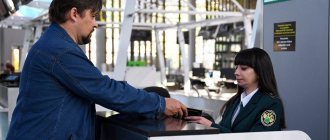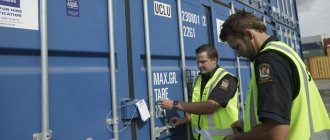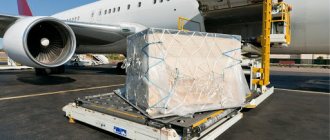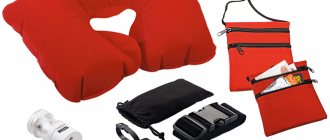INFORMATION FOR PASSENGERS
flying to the Republic of Uzbekistan
For reasons of flight safety on National Aviation aircraft, from November 27, 2021, it is prohibited to carry any types of lighters and matches on board the aircraft.
Inspection procedure
Pre-flight inspection of air passengers and baggage, including items carried by passengers, is carried out in order to ensure the safety of passengers, aircraft crew members and civil aviation personnel.
The inspection is carried out by aviation security officers with the participation of internal affairs officers in transport.
Pre-flight inspection of a passenger using technical means is carried out in the following order:
- the boarding pass is checked and the identity document is verified with the passenger;
- It is proposed to put out items containing metal in the passenger's clothing (cigarette cases, keys, packs of cigarettes, etc.), mobile phones, photo, film, radio equipment, remove outerwear (coat, jacket, raincoat, jacket, sweater, jumper, pullover, jacket, etc.), hat, belt, shoes (at the request of the inspection staff) and put everything in trays, baskets, put on the conveyor of the X-ray television installation;
Note: passengers with shoes with a sole thickness of less than 1 cm and a heel height of less than 2.5 cm, as well as a belt less than 4 cm wide and less than 0.5 cm thick, may not remove these items.
- it is proposed to go through the frame of a stationary metal detector;
- Passengers are searched using a metal detector and manual contact method;
- the contents of luggage are inspected, including things on the passenger’s person, outerwear, headgear, belt, shoes;
- luggage and belongings carried by a passenger identified as potentially dangerous are subject to manual (contact) inspection;
- containers with liquids are additionally checked visually.
After the inspection, passengers go to a sterile area (storage area) and wait for an invitation to board the aircraft.
Animals, birds, reptiles and other representatives of fauna are allowed for transportation on board the aircraft if they have the appropriate veterinary certificates (dogs must be muzzled).
Items that can be used as weapons of attack (models and models of weapons, household knives with a blade length exceeding 60 mm, axes, saws, ice axes, crossbows, pneumatic weapons, spearfishing guns, etc.) are transported only in luggage.
Passengers who have not passed the pre-flight inspection, as well as those who do not have identification documents with them, are not allowed for transportation.
Substances and objects prohibited for transportation by air are found on the passenger, in his hand luggage or baggage during inspection, and are confiscated.
Substances and objects seized from passengers that are freely available but prohibited for transportation on civil aircraft (gas cylinders, flammable varnishes, paints, household toxic substances, flammable liquids, pyrotechnic products, etc.) are given to mourners or surrendered for the custody of the airport administration. These substances and objects, during the storage period specified by the passenger, can be claimed by their owners or on their instructions (by proxy) by other persons.
A passenger who, during inspection, is found to have substances or objects for the manufacture, carrying and storage of which there is criminal liability (explosives, explosive devices, firearms or bladed weapons, narcotic, poisonous, poisonous substances, etc.), is removed from the flight and together with the materials is transferred to the internal affairs bodies.
Carriage by passengers on civil aviation aircraft of substances and items prohibited for transportation entails liability as provided by law.
Passengers are strictly prohibited from accepting suitcases, parcels and other items from strangers for transportation on aircraft, as well as entrusting their luggage to strangers under supervision, even for a short time.
Excerpts from the “Rules for pre-flight and post-flight inspections”, approved by order of the Ministry of Transport of the Russian Federation dated July 25, 2007 No. 104, registered with the Ministry of Justice of the Russian Federation on August 9, 2007, registration No. 9975.
Substances and objects seized from passengers that are freely available but prohibited for transportation on civil aircraft (gas cylinders, flammable varnishes, paints, household toxic substances, flammable liquids, pyrotechnic products, etc.) are handed over to mourners or are handed over for temporary storage to the seizure room. These substances and objects during the storage period specified by the passenger. Things and objects prohibited for transportation by air transport, confiscated from passengers, according to the Act, are transferred for temporary storage to the seizure room. Seized substances and objects are stored for three months from the date of seizure, or the date indicated in the Report by the passenger, but no more than three months and can be claimed by their owners or on their behalf (by proxy) by other persons. Issue time: working days from 09.00 – 16.00.
Warnings
- Unfortunately, if you refuse to undergo pre-flight inspection, we will be forced to deny you boarding;
- If, during your inspection, substances and objects are found in your possession, the manufacture, carrying or storage of which is subject to criminal liability, then we will be forced to remove you from the flight and, together with the materials, transfer you to the internal affairs authorities to resolve the issue of bringing you to justice.
- In the airside area of the airport it is not allowed: the use of film cameras, photo and video equipment without permission from the airport administration; clause 16. b) Federal Aviation Rules “Aviation Security Requirements for Airports” (approved by Order of the Ministry of Transport of the Russian Federation dated November 28, 2005 N 142)
X. Timing of pre-flight inspection
109. The pre-flight inspection process should not increase the duration of service for departing passengers and affect the regularity of flights. Simplification of the procedures for pre-flight inspection of passengers, including transit and transfer passengers, is not allowed.
110. In order to avoid flight delays, the beginning and end of pre-flight inspection is determined by the technological schedule.
111. The shift manager of the passenger transportation service of the airport, aviation enterprise, or operator promptly informs the senior shift of the aviation security inspection service and the senior inspection shift of the internal affairs body on transport about departure delays.
Allowed to be carried on board
In the checked baggage of a passenger placed in the cargo and luggage compartments of the aircraft without the possibility of passengers having access to the baggage during the flight:
· crossbows, spearguns, checkers, sabers, cutlasses, scimitars, broadswords, swords, rapiers, bayonets, daggers, knives with ejectable blades, with locking locks, simulators of any type of weapon;
· household knives (scissors) with a blade length over 60 mm;
· alcoholic drinks containing more than 24%, but not more than 70% alcohol by volume in containers with a capacity of no more than 5 liters, in containers intended for retail trade - no more than 5 liters per passenger;
· liquids and alcoholic drinks with an alcohol content by volume of no more than 24%;
· aerosols intended for use for sports or household purposes, the release valves of the cans are protected by caps from spontaneous release of the contents in containers with a capacity of no more than 0.5 kg or 500 ml - no more than 2 kg or 2 liters per passenger;
· medical thermometer containing mercury, in a standard case - one per passenger.
Before a passenger's luggage is loaded onto an airplane, it must be checked for safety using X-ray equipment. This procedure is fully automated and is carried out immediately after registration at the counter.
If a passenger is transporting highly sensitive photographic or x-ray film, then, in order to avoid possible damage, he is advised not to expose them to translucency (remove them from luggage and hand luggage).
In some cases, the security service may open luggage for manual inspection with the direct participation of the passenger, or in the absence of the owner of the items.
Inspection of baggage in the absence of a passenger is carried out by a commission, which includes employees of the aviation security service and the internal affairs body for transport, in the presence of two witnesses, with the drawing up of a specific act.
To avoid opening baggage to check its safety, passengers are advised to pay attention to the absence of items and substances prohibited for transportation on board aircraft among the contents of baggage.
Crew members and passengers are allowed to carry the following items and substances in checked baggage on board the aircraft, subject to the required conditions:
· crossbows, spearguns, checkers, sabers, cutlasses, scimitars, broadswords, swords, rapiers, bayonets, daggers, knives: hunting knives, knives with ejectable blades, with locking locks, simulators of any type of weapon;
· household knives (scissors) with a blade length over 60 mm;
· alcoholic drinks containing more than 24%, but not more than 70% alcohol by volume in containers with a capacity of no more than 5 liters, in containers intended for retail trade - no more than 5 liters per passenger;
· liquids and alcoholic drinks with an alcohol content by volume of no more than 24%;
· aerosols intended for use for sports or household purposes, the release valves of the cans are protected by caps from spontaneous release of the contents in containers with a capacity of no more than 0.5 kg. or 2l. per passenger.
In things carried by passengers (carry-on luggage)
· a medical thermometer that does not contain mercury;
· mercury tonometer in a standard case - one per passenger;
· mercury barometer or thermometer, packed in a sealed container and sealed with the sender's seal;
· disposable lighters - one per passenger;
· dry ice for cooling perishable foods - no more than 2 kg per passenger;
· 3% hydrogen peroxide - no more than 100 ml per passenger;
· liquids, gels and aerosols classified as non-hazardous: in containers with a capacity of no more than 100 ml (or equivalent capacity in other units of volume measurement), packed in a securely closed transparent plastic bag with a volume of no more than 1 liter - one bag per passenger.
Liquids in containers
Containers larger than 100 ml are not accepted for transportation, even if the container is only partially filled. Exceptions to transportation include medications, baby food, and special dietary needs.
Liquids purchased from duty free shops at the airport
Liquids purchased from duty-free shops at the airport or on board an aircraft must be packaged in a securely sealed plastic bag that allows for identification of access to the contents of the bag during the flight on which there is reliable evidence that the purchase was made at the airport. duty free shops or on board the aircraft on the day(s) of travel.
The administration of the airport, airline, or operator has the right to decide to introduce additional measures to ensure aviation security on high-risk flights, and as a result prohibit the transportation of the following items in the aircraft cabin:
· corkscrews;
· hypodermic needles (unless medical justification is provided);
· knitting needles;
· scissors with a blade length of less than 60 mm;
· folding (without lock) travel and pocket knives with a blade length of less than 60 mm.
At the pre-flight inspection point, an aviation security officer will check you for the presence of things and items prohibited for transportation. Your hand luggage will be scanned in an X-ray machine, and you must go through a metal detector. In this case, you need to remove outer clothing, a waist belt more than 4 cm wide and more than 0.5 cm thick, as well as shoes with a sole thickness of more than 1 cm and a heel height of more than 2.5 cm, lay out small metal objects ( keys, cell phone, coins, etc.).
If you have a pacemaker, shunt or catheter, please notify the employee of their presence and do not go through the metal detector.
To avoid misunderstandings, do not carry items that resemble weapons and ammunition in your hand luggage.
All items and substances that can cause harm to passengers, crew members and the aircraft are not transported in hand luggage.
Small-sized personal mobility aids
Carriage as checked baggage and hand luggage of small-sized personal mobility aids powered by lithium batteries.
Small personal mobility aids include:
· unicycles;
· Segways (mini-Segways);
· hoverboards;
· hoverboards;
· electric scooters
Based on IATA recommendations, air transportation of these items is possible as checked baggage, provided there is no lithium battery in the vehicle. A lithium battery removed from a vehicle is allowed for transportation only in hand luggage, provided that the battery power does not exceed the established standard - 160 Wh (Wh, W/h). A small device with a built-in (non-removable) lithium battery can be transported when registered as “dangerous cargo” through the airport cargo terminal.
Rules for transporting weapons
· When booking and checking in for flights operated by Aeroflot PJSC, the passenger must inform of their intention to transport weapons as baggage.
· A passenger carrying a weapon must appear for check-in no later than one and a half hours before departure.
· When transporting weapons across the territory of the Russian Federation, the passenger must have the appropriate permit for the right to store and carry weapons.
· When importing/exporting weapons to/from the territory of the Russian Federation and transporting them through the territory of the Russian Federation, the passenger must have a permit to import/export weapons issued by an authorized body of the Ministry of Internal Affairs.
· Transfer passengers traveling within the Russian Federation and carrying weapons must re-register them at Roshchino airport.
· Foreign citizens in accordance with the Law “On Weapons”:
o the import of sporting and hunting weapons into the territory of the Russian Federation is permitted if there is an invitation from a legal entity that has a hunting license, a hunting contract with the specified legal entity or an invitation to participate in sporting events and the appropriate permission from the Ministry of Internal Affairs;
o the import into the territory of the Russian Federation and the use on the territory of the Russian Federation of all types, types and models of weapons are prohibited in order to ensure personal safety, protect the life and health of other citizens, their property, escort cargo and for other purposes not specified above, unless it is provided for by separate international treaties of the Russian Federation.
· At the airport of departure, weapons must be transferred for temporary storage for the period of the flight and issued to the owners at the airport of destination.
The room for receiving and issuing registration of special equipment is located on the second floor of the airport terminal building at Roshchino Airport, the next door behind the inspection point.
There is an information board on the door of the special equipment registration room. « DESIGN OF SPECIAL EQUIPMENT
«
· Simulators of weapons (pistols, revolvers, rifles, carbines, machine guns, electroshock devices, etc.) are prohibited from being transported in aircraft cabins. Transportation of simulator weapons is allowed only in checked baggage.
· Weapons are accepted for transportation only in an unloaded state in passenger packaging (cases, holsters, special containers, cases, cases) that meets the requirements for the safety and security of weapons, while weapons and ammunition must be in separate packages.
· The weight of transported ammunition must not exceed 5 kg per passenger.
· Cartridges for gas weapons are prohibited for transportation by air.
· Pneumatic devices with muzzle energy over 3 J are classified as civilian weapons (Article 3 of the Law “On Weapons”) and are transported in the manner prescribed for other weapons. When transporting pneumatic weapons with a muzzle energy of more than 7.5 J and a caliber of more than 4.5 mm, you must have permission to carry and store them (Article 13 of the Law “On Weapons”). Exception:
— At the request of the aviation authorities of Vietnam and the Republic of Belarus, pneumatic weapons of all types, including those with muzzle energy up to 3.0 J, must be transferred for temporary storage for the period of the flight with the execution of a Transfer Certificate. To comply with this requirement, you must report the presence of an air gun when checking in at the airport.
— At the request of the Spanish aviation authorities, pneumatic weapons of all types, including those with muzzle energy up to 3.0 J, as well as imitations of any type of weapon, must be delivered separately from other baggage and marked with special tags. To comply with this requirement, when checking in at the airport, you must report the presence of pneumatic weapons and any imitation weapons.
· Electroshock devices and spark gaps of domestic production are classified as civilian weapons (Article 3 of the Law “On Weapons”) and are transported in the manner prescribed for other weapons. When transporting electroshock devices, you must have a document with technical characteristics with you for verification by representatives of the Ministry of Internal Affairs of the compliance of the device’s output parameters with the established state standards of the Russian Federation. The circulation of electroshock devices manufactured outside the Russian Federation is prohibited (Article 6 of the Law “On Weapons”), and their transportation is accordingly prohibited.
Cargo inspection procedure at the warehouse
Everyone knows the fact that during transportation, cargo can be damaged and lose its quality characteristics.
Fraudulent actions that are aimed at partial theft of transported means and goods cannot be ruled out. Therefore, cargo inspection is the most important stage of delivery. But cargo inspection can be carried out by both the customer and the customs service if the cargo has crossed one or more borders. They conduct an inspection after arrival in accordance with transport documents for the goods, namely declarations or invoices.
Inspection of goods is paid separately from delivery and is calculated for each inspected container or unit of packaging.
List of prohibited or restricted substances and items
Lists of weapons, explosives or other devices, objects and substances in respect of which a ban or restriction on movement into the transport security zone or part of it has been established, to the order of the Ministry of Transport of Russia dated July 23, 2015 No. 227 “On approval of the Rules for conducting inspections and additional inspections” , repeated inspection in order to ensure transport security.”
Whether a lithium battery can be shipped by air depends on its configuration and energy capacity (watt-hour) (for rechargeable lithium-ion/polymer batteries) or lithium content (for non-rechargeable lithium metal batteries).
For your safety, as well as the safety of other passengers, we ask you to take into account the requirements and read the detailed instructions on the carriage of lithium batteries. Electronic devices powered by lithium batteries should be completely turned off (not in standby or low power mode) and placed in protective packaging to prevent inadvertent activation or damage. Suitable protection may be provided in the form of a hard case and/or cushioning material such as clothing to prevent movement.
Baggage check
Before a passenger's luggage is loaded onto an airplane, it must be checked for safety using X-ray equipment. This procedure is fully automated and is carried out immediately after registration at the counter.
If a passenger is transporting highly sensitive photographic or x-ray film, then, in order to avoid possible damage, he is advised not to expose them to translucency (remove them from luggage and hand luggage).
In some cases, the security service may open luggage for manual inspection with the direct participation of the passenger, or in the absence of the owner of the items.
Inspection of baggage in the absence of a passenger is carried out by a commission, which includes employees of the aviation security service and the internal affairs body for transport, in the presence of two witnesses, with the drawing up of a specific act.
To avoid opening baggage to check its safety, passengers are advised to pay attention to the absence of items and substances prohibited for transportation on aircraft among the contents of baggage.
Crew members and passengers are allowed to carry the following items and substances in checked baggage on board the aircraft, subject to the required conditions:
- crossbows, spearguns, checkers, sabers, cutlasses, scimitars, broadswords, swords, rapiers, bayonets, daggers, knives: hunting knives, knives with ejectable blades, with locking locks, simulators of any type of weapon;
- household knives (scissors) with a blade length over 60 mm;
- alcoholic drinks containing more than 24%, but not more than 70% alcohol by volume in containers with a capacity of no more than 5 liters, in containers intended for retail trade - no more than 5 liters per passenger;
- liquids and alcoholic drinks with an alcohol content by volume of no more than 24%;
- aerosols intended for use for sports or household purposes, the release valves of the cans are protected by caps from spontaneous release of the contents in containers with a capacity of no more than 0.5 kg. or 2l. per passenger.
VIII. Pre-flight inspection of transit and transfer passengers
79. Pre-flight inspection of transit and transfer passengers, including things carried by passengers, at intermediate airports is carried out on a general basis before entering the sterile area and mixing with passengers who have passed pre-flight inspection, for whom this point of transportation is the initial point of transportation.
80. In order to exclude contact with passengers who have not undergone pre-flight inspection at the airport, arrival/departure halls can be equipped to accommodate transit and transfer passengers with the passengers’ belongings.
81. Transit and transfer passengers are not allowed to have their checked baggage.
82. If paragraphs 80 and 81 of these Rules are not followed, transit and transfer passengers, including things carried by passengers, are subject to repeated pre-flight inspection on a general basis.
83. The luggage of transfer passengers at intermediate airports is subject to mandatory pre-flight inspection before being mixed with the inspected luggage of passengers for whom this point of transportation is the initial point. When changing routes on their initiative, the baggage of transfer and transit passengers is re-inspected and sent on the same flight as the passengers.
84. Employees of the State Courier Service of the Russian Federation accompanying correspondence have the right to remain on board the aircraft at intermediate landing points and exchange correspondence in aircraft cabins during their stops, to be personally present during the unloading (loading) of correspondence from the luggage compartment from the moment the luggage compartment is opened compartment until it closes.
Hand luggage
At the pre-flight inspection point, an aviation security officer will check you for the presence of things and items prohibited for transportation. Your hand luggage will be scanned in an X-ray machine, and you must go through a metal detector. In this case, you need to remove outer clothing, a waist belt more than 4 cm wide and more than 0.5 cm thick, as well as shoes with a sole thickness of more than 1 cm and a heel height of more than 2.5 cm, lay out small metal objects ( keys, cell phone, coins, etc.).
If you have a pacemaker, shunt or catheter, please notify the employee of their presence and do not go through the metal detector.
To avoid misunderstandings, do not carry items that resemble weapons and ammunition in your hand luggage.
